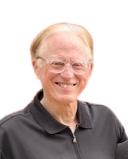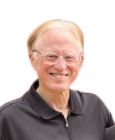Sleep
A.D.H.D. and Sleep
Many persons diagnosed with A.D.H.D. have undiagnosed sleep problems
Posted April 28, 2013
A New York Times Op Ed piece titled “Diagnosing the Wrong Deficit” by Vatsal D. Thakkar, MD was published April 28 (http://www.nytimes.com/2013/04/28/opinion/sunday/diagnosing-the-wrong-deficit.html?ref=opinion). The piece is persuasive, since the author not only summarizes research to support his position, but also has personal experience having been misdiagnosed with A.D.H.D. before finally found to have an atypical form of narcolepsy. His argument, that many persons diagnosed with A.D.H.D. have undiagnosed sleep problems, is one that I have been making for some time. He goes on to say that internists, pediatricians, and psychiatrists should routinely screen for sleep disorders as part of their diagnostic process. I agree, and go further to extend that list to school psychologists, school counselors, and child clinical psychologists since symptoms leading to an A.D.H.D. diagnosis most often first are seen at school. Also, sleep problems do not have to rise to the level of a clinical disorder such as narcolepsy or obstructive sleep apnea to affect children’s attention, learning, memory, and behavior. Since many of the pharmaceuticals prescribed for A.D.H.D. impair sleep, those treatments may well be counterproductive in many instances. I hasten to add that all the forgoing does not imply that all persons with A.D.H.D have significant sleep problems or that A.D.H.D. is not a genuine disorder.
Screening for sleep problems should begin with the parents and the child completing one of the available reliable and valid sleep questionnaires asking about sleep habits and daytime sleepiness. These questionnaires need to be accompanied by a sleep diary where a record is kept of bed time, falling asleep time, night awakenings, and rise time. Children who are suspected to have problems can be assessed further with actigraphy, involving wearing for a week a small wristwatch-size device that tracks movement and has good accuracy at measuring many aspects of sleep. The highest level of assessment, reserved for those with suspected serious clinical problems, is polysomnography, requiring a night or two in a hospital or clinic setting. Eventually, home-based polysomnography should become more readily available.
Sleep professionals can be located in every area of the U.S. and most other countries. One source for finding them is the website of the National Sleep Foundation (http://www.sleepfoundation.org/find-sleep-professional) that has a search engine allowing one to enter their location and find professionals nearby.


